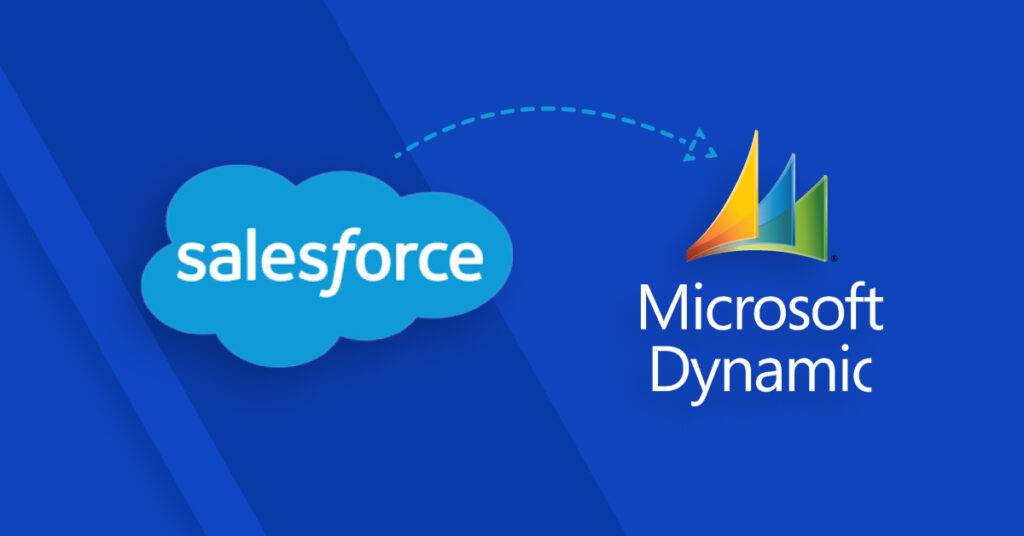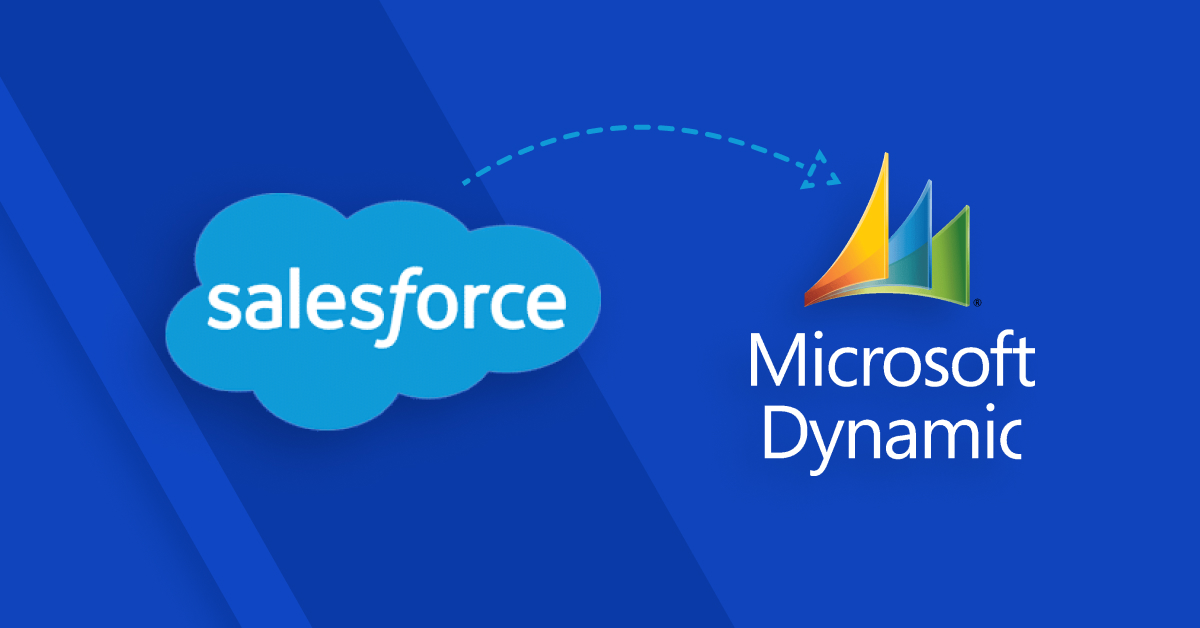It is critical to maintain a high degree of data quality. Consequently, companies must discover the most satisfactory data storage solution and the best software solutions for CRM, WMS, and ERP implementations, including Salesforce to Microsoft Dynamics migration.
Putting together the perfect collection of answers necessitates shifting data from one area to another, from one system to another. For example, a corporation may switch from Microsoft Dynamics 365 to Salesforce. Alternatively, from Salesforce to Microsoft Dynamics 365. It might be the outcome of a merger or a strategic choice.
Because an organization’s data is one of its most important assets, the most secure data migration method is a must. Choosing a data transfer service provider with premium support and robust data integration technologies is essential.

So why are people switching from Salesforce to Dynamics?
Implementing new software can be difficult, and migrating data from one system to another can be even more difficult. So, what prompted our respondents to move to Microsoft Dynamics?
Dynamics’ main selling point was its extensive functionality. However, ease of implementation was also important, presumably because Dynamics leverages popular programming languages in its adaptations.
Customers do not need to work with professional Microsoft Dynamics 365 migration services to produce the particular capabilities they desire.
Another critical factor in the decision was cost-effectiveness; Dynamics is recognized as substantially cheaper and more transparent in its pricing structures than some of its main rivals.
Common Challenges
The source system state and configurations, current data processes, data quality vs. configuration of a destination system, new data processes, and use at the transfer time are some of the broader terms that describe the complexity of Salesforce Data Migration. For example, migrating data into an existing system is more complicated than migrating to a new one.
It is critical to have a data migration strategy in place to avoid the following consequences:
- Adoption issues.
- Issues with customer relationships if incorrect info gets to customers.
- Analytics issues because data is not adequately stored.
Lack of processes
The most crucial aspect of any method is identifying and defining procedures. There may be changes in the customer’s journey that your salespeople should be aware of. This is the only method to turn leads into customers.
Salesforce can help your Sales team with anything from sending the proper communication to increasing social media engagement. First, however, you must recognize and specify those procedures and duties, without which the platform will not be as valuable to you.
Not reviewing workflows
Another vital thing to remember is disabling active processes before importing data. If you do not disable the active triggers, the system may hamper the migration progress. If past procedures or triggers are still dynamic, you may send unsolicited emails to your clients, which you do not want to happen. Another thing to double-check is whether the validation rules require any adjustments.
You won’t have to worry about data loss if you choose the correct partner.
Partners that are well-versed in both systems will be able to traverse them. Our expert staff can match most of your data fast and precisely, but we also do it in a way that assures you don’t lose important information like record history, sales possibilities, or quotes.
Of course, there will be data that you choose not to move to your new CRM, but this is a deliberate decision rather than a mistake.
This is significant because many clients utilize the migration process to fine-tune the UI and associated procedures.
Considerations
Know your Migration Type
When deciding whether to transition from Salesforce to Dynamics 365, you must consider several factors, including wholesale changes and how quickly you need to make the transfer. By answering these questions, you can decide whether to go for a complete implementation or simply switch to a different platform.
You must perform a comprehensive data reconciliation if you choose a full implementation. This is the option to select if your company wants to drastically improve its entire business operations and make the most of Dynamics 365.
It is simpler if you are merely switching systems since you only need to migrate your data from Salesforce to Dynamics 365.
Spend some time preparing your data.
Needless to say that your new CRM will replicate the data you transfer. The importance of data quality in migration success cannot be overstated. Consider the following to guarantee that data remains accurate:
Data Cleaning
You should clean and profile your data for reliability and authenticity. The optimal time to do this is before migration. Analyze the data for mistakes to be removed, duplicates to be removed, and incomplete entries to be flagged.
Data Organization
This entails defining data categories in Salesforce and correlating them to their corresponding labels in D365, making the conversion process more accessible through Dynamics 365 consultancy.
Data Transfer
Moving your data entails exporting data from Salesforce and putting it back into Dynamics 365. There are some differences between Dynamics 365 and Salesforce that affect this migration:
Export
It is vital to remember that not all data fields from Salesforce will be able to be pulled because some of these entities do not exist in Dynamics 365. Therefore, the areas you want to delete must be designated as ‘visible’ and properly delineated with suitable letter cases.
Import
Use the Dynamics 365 data import template to account for differences in calculated fields and custom entity types. Make careful to finish this import using batches at least two weeks before the new CRM’s launch.
The Verdict
Several connectors are available to bridge your Salesforce and Dynamics data models, allowing information to flow between the two products and allowing users to use both systems without establishing two disconnected, asynchronous data silos.
Software migration is a significant endeavor, but with a bit of forethought and planning, the path to your new software will be reasonably smooth.
Hiring a professional is the best way to ensure your transfer is successful. An experienced Dynamics migration specialist can take your company down the route to your new CRM and set everything up so you can get started immediately.
What’s Next?
The possibilities are unlimited when you migrate Salesforce components to Microsoft applications. The Power Platform has many intriguing potential and implications, but knowing where to begin or what it may achieve for your company can be difficult. Please don’t hesitate to contact us immediately if you’d like to learn more about the migration or explore a prospective proposal.



